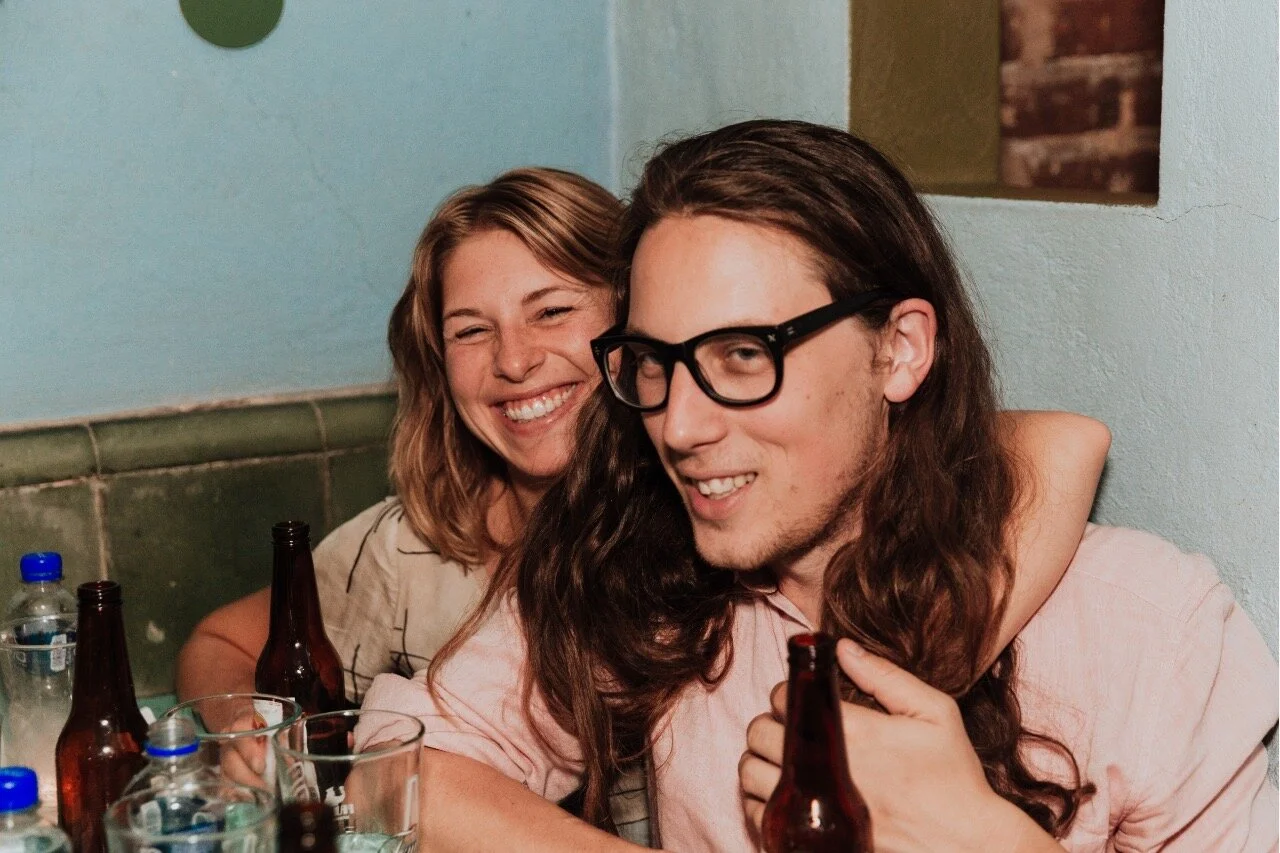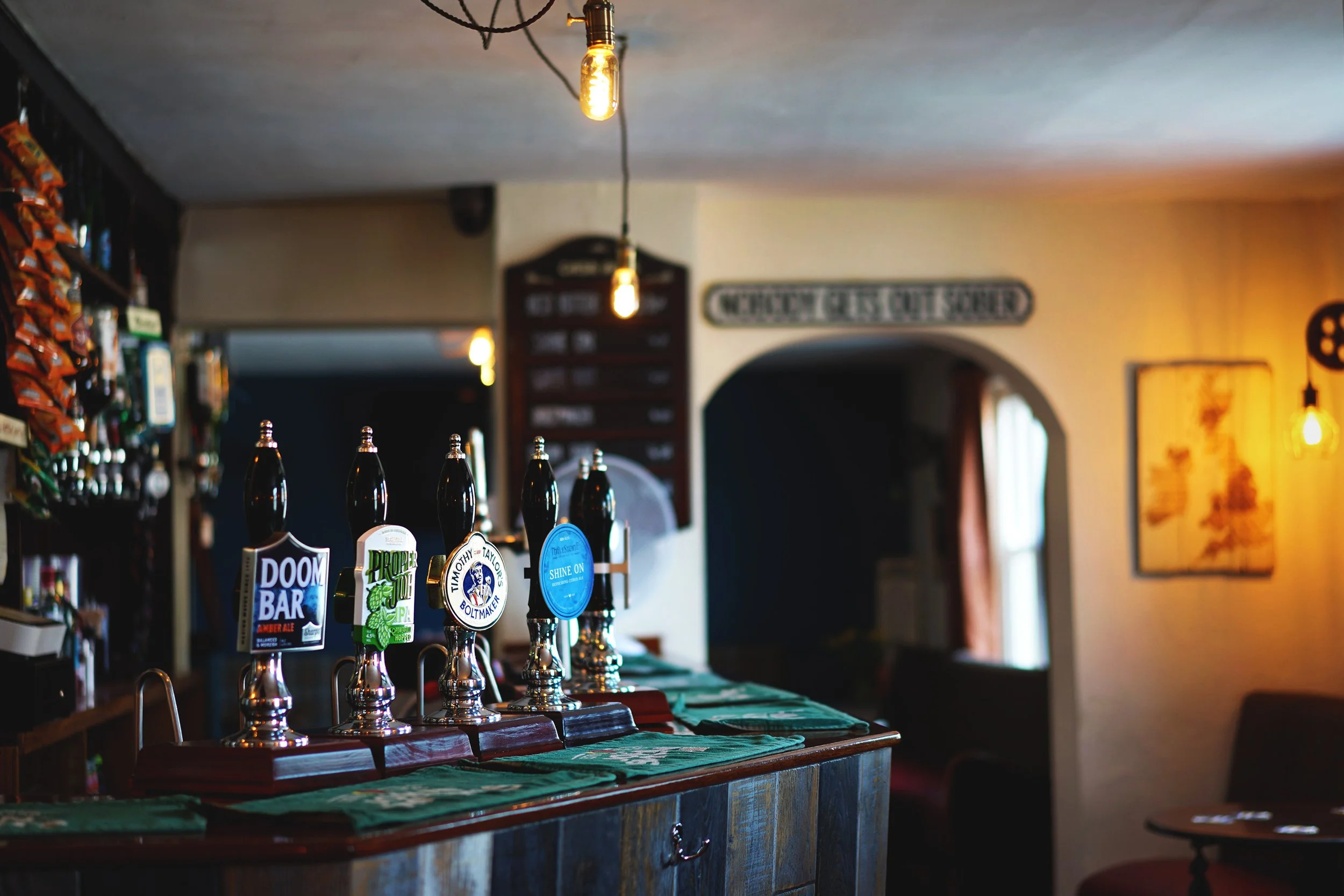Crab Backs and Anchor Steam — Chasing Bourdain at Swan Oyster Depot, San Francisco
It’s around 11am when we join the line at a standstill outside San Francisco's revered Swan Oyster Depot, as it ascends Polk Street’s gentle incline. It’s also a Monday, and in our galaxy-brained wisdom, my father and I figured this would be an ideal time to visit; minimum wait, maximum seafood. We were wrong, and our tummies were already rumbling.
Photography by Matthew Curtis
We’re here because the late Anthony Bourdain told us in season 6, episode 5 of his award-winning CNN series Parts Unknown that this neighbourhood seafood counter was “a touchstone” in his world-wide travels, “a happy zone.” In the scene at Swan Oyster Depot, there’s a genuine sense of childlike glee as Tony works his way through some of his menu favourites, like crab backs and freshly shucked oysters. He sends himself on a minor guilt-trip when he decides to disrupt his diet with a beer (a pint of Anchor Steam, brewed just three miles away, no less) as his monologue veers towards the self-depreciative.
“I need a counter with some familiar faces on the other side,” he confesses, reasoning why he always came here when he filmed in the Bay Area.
Dad and I had spent the best part of a long weekend in San Francisco. We’d hit various breweries, winemakers and tourist spots before driving north to Sonoma Valley, so I could visit Russian River Brewing Company in Santa Rosa. Convincing my dad to join me at Swan Oyster Depot was not difficult; he’s a fanatical lover of seafood, and I had assured him that beer would be involved.
Skipping breakfast, and seeing that the seafood counter was just over a mile from our hotel, we decided to walk, naively hoping to catch the best of the city in the California morning sunshine. Throughout my life, I had always portrayed San Francisco through decidedly rose-tinted spectacles. It was the home of the summer of love, hippies, freedom; it was sunshine, walks along the bay and the birthplace of sourdough; it was Robin Williams in Mrs. Doubtfire. These are—largely—false platitudes. This is not what San Francisco felt like at all.
In Parts Unknown, Bourdain describes the city as a “righteously dirty town.” Walking along Market Street that morning brought this element—one of poverty, grit and extreme disparity—sharply into focus. As we turned a corner from Market to Polk, we passed the headquarters of firms like Uber and Twitter, and many, many homeless people going about their lives, quite literally opposite. This is a city in flux, with much of this disparity caused by tech giants like these, gradually eroding the old-time, American spirit I thought it would provide me with in high quantity.
But dig deep enough and you will discover the soul of the city is still, in part, intact. You’ll find it while sipping an Irish coffee at The Buena Vista, three beers into an evening at Toronado, dining at one of Chinatown’s renowned spots like Hunan Home’s, or while sitting at the 18-seat counter at Swan Oyster Depot. It’s existed at this location since 1912, and has been in the capable hands of the Sancimino family since 1946—and they’re right behind the counter waiting to serve you when you arrive.
But first, we had to deal with this damn line. Thanks, Tony. Halfway through our wait for a seat—around 45 minutes in—our neighbours decide they’re bored enough to start a conversation. Being British I dread this, mostly because I know as soon as my accent is airborne, someone will want to speak to me about the fucking Queen. The next few minutes grind away at me; on the one side awkward small talk, on the other, the sight of diners slurping oysters and scraping plates clean with fistfuls of freshly baked bread, as my stomach remains empty.
I was close now though, enough that I could see beneath the sea-blue awning, and past the elegant gold-painted lettering in Swan’s window, to the voluminous plates of seafood piled in full view of passers-by. The crab backs are stacked high, their buttery innards calling me with siren song. Idle chat inside Swan’s long, compact interior hums around me as we hang in the doorway—are those seats empty? We don’t wait for an invitation and finally take our places, cramped on stools against the hard marble and porcelain of the counter.
***
Swan Oyster Depot is busy, and that feels like an understatement. To our left is a hen party (well, technically a bachelorette party, seeing as we’re in the US) in its earliest stages, eating slices of smoked salmon with bare hands and washing it down with mimosas. The folks on our right were seated just before us and ask for a whole steamed lobster, but are immediately informed they’re fresh out. Their disappointment is an audible “mfft” through mouths stuffed with bread.
One of the Sancimino’s approaches us, placing a basket of freshly baked sourdough on the counter. “Can I get you gentlemen anything to drink?” I instinctively order two pints of Anchor Steam. He nods to me in confirmation, adding a mental note to an already busy list of tasks given to him by adjacent diners. Bar one member of staff in the kitchen doing prep, everything at Swan happens behind this counter, and somehow the servers take it in their seemingly effortless stride.
““My crab back is the first to arrive; a little upturned shell swimming with butter and guts.””
I mindlessly heap a pat of butter onto a slice of sourdough before taking a bite. It’s my first mouthful of food that day and is revelatory. “So this is sourdough,” I think to myself before taking another bite. This soft, spongy, tangy bread is nothing like the aggressively crusty iterations I’m used to back home. We scoff the lot and have to ask for another basket, as we know we’ll need more for sauce-mopping.
Our pints of Steam Beer are placed on a napkin laid out on the marble in front of us, each topped with a generous two-finger head of foam, just the way I like it. It’s as bright as polished copper, just catching enough sunlight through the window to burnish its edges. If you’ve ever tasted Anchor Steam you might know it’s not a particularly interesting beer, and that’s probably because you’ve never tasted it in San Francisco.
Just like my new-found understanding and appreciation for sourdough, my morning-fresh palate was able to pick out all kinds of refreshment from the beer; a noticeable prickle from Northern Brewer hops, almost noble in its herbaceousness. Rich, caramel undertones buoy note-perfect carbonation, and a crisp, dry finish many other lager-style beers would be envious of. I realised at that moment that classic beers like this can only be truly understood when partaken in their proper context. And for Anchor Steam, nothing felt more authentic to me than this moment.
A few sips in and our server returns to see if we’d digested the menu, strewn out on handwritten signs stuck to the wall across the counter from us. Dad asks for oysters and a cup of clam chowder, while I request a crab back, and two more pints of Anchor Steam. That feels like enough to start. My crab back is the first to arrive; a little upturned shell swimming with butter and guts, or “unicorn juice” as Bourdain described it, “the brains, the fat, the magic.”
It’s a little bowl of slick, salty heaven. Dad doesn’t understand why I get so excited about offal, for him it’s a food of necessity, not indulgence. I dunk some sourdough into the shell with one hand while tasting some chowder with the other, taking a sip of Steam Beer to cleanse the palate in-between mouthfuls. Our oysters arrive. We didn’t specify what we wanted, so a platter featuring six different varieties—a pair of each—is placed on our increasingly crowded portion of the counter. I’m too wrapped up in my crab back to remember all their names, but the salty/sweet Yamamoto causes me to emit a miniature outburst of delight.
The hen party has ordered more smoked salmon, and another server gets to work directly in front of us, deftly slicing into a large, orange mass of fish flesh. Noticing our interest, he hands us each a sliver of oily, smoky meat. Would you like to order more food? Yes please, we’ll take a crab salad and a shrimp cocktail. And two more pints of Anchor Steam, we’ll need something to wash it all down.
More than an hour passes in what feels like an instant. People come and go as a never-ending line streams steadily towards the counter. Checks are worked out on the fly, from memory, and are paid for in cash (it’s the only form of payment they accept) as large wads of green dollar bills are passed over in exchange for the homely service, and the kind of seafood that defies even our loftiest expectations. Our crab and shrimp is no exception; it had been out of the ocean for a couple of hours at best. Sweet nuggets of flesh, balanced with the acidity of a sharp cocktail sauce in the case of the shrimp, and tangy, creamy Louie with the crab.
Soon we’re handing over our own wad of bills while the hen party, continuing unabated behind us, appears to be ordering shots of tequila. Well, it is past midday. On leaving the first thing I do is text photos of my meal to my friend, foodie, and former San Francisco resident Jesse Friedman. “Did you go off-menu?” He replies immediately, with a link to a feature in the San Francisco Chronicle detailing a list of secret dishes for those in the know. Damn.
While I may not have gotten to witness the spectacle of a Crabsanthamum, what I did experience—for just over an hour at least—was what felt like an example of something that is truly San Franciscan. Gentrification is transforming the city into a hollow pastiche of itself, while pushing those it marginalises further towards the sidelines. Over my four days in town, I never quite felt settled, albeit for a few moments here and there, one of which was sidled up to the counter at Swan Oyster Depot.
***
A portion of the writers fee for this article was donated to the Campaign Against Living Miserably (CALM) a charity working to raise awareness of suicide, which is the biggest killer of men under 45 in the United Kingdom. Find out how the campaign is taking a stand against suicide here.


























